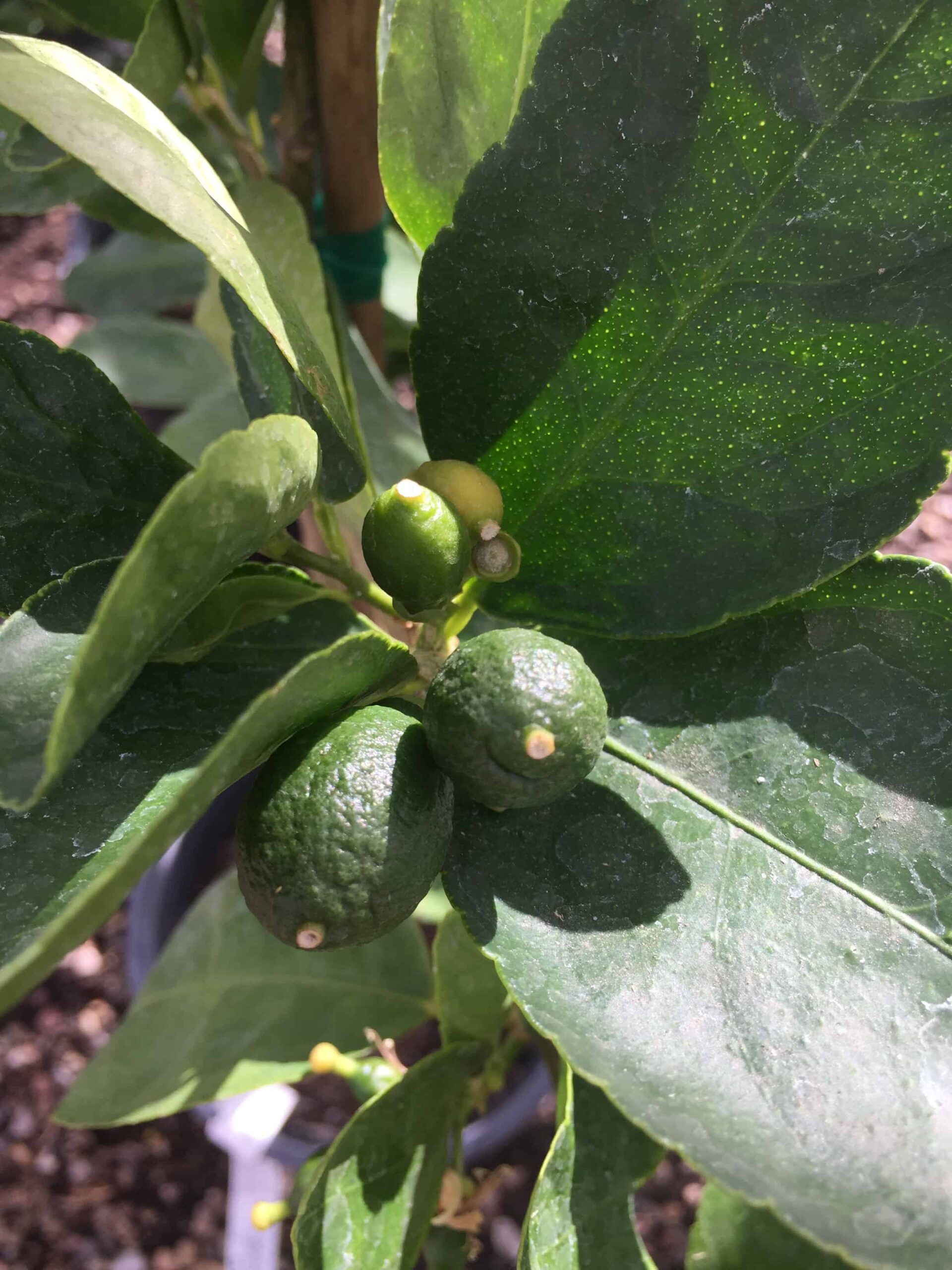Learn about growing a lime tree. They do well in the ground and in containers. There are many lime varieties to choose from, depending on what you want to use them for. Some are more cold hardy than others.
Whether you’re a key lime pie fanatic or love the thought of bringing the tropics into your home, growing a lime tree is fun. You can use limes for cooking and baking. In my house, we use lime juice and lime zest often. Sometimes I slice them up and cook with them.
I explain where to buy a lime tree and how to grow limes. The great news is you can grow a lime tree outdoors in temperate climates. They are self-fertile, so you only need one lime tree to bear fruit. However, you’ll have a larger harvest with two or more.
While lime trees self-pollinate, if you grow them indoors, you can hand pollinate to yield more fruit.
Citrus trees are expensive. There’s more to growing limes than buying a tree and planting it in the ground. Follow these steps to ensure the tree grows, is healthy, and produces limes.
It’s important to consider what will grow well in your area, called a growing zone. Outdoors, limes grow best in hardiness zones 9 – 10 and well in 8 – 11. You’ll also need to consider sunlight, soil, pests, and the convenience of watering before buying and planting a lime tree.
Be sure to source and purchase lime trees locally because the rootstocks are tailored to different regions.
Lime Tree
Lime trees are citrus plants that originate in southern Asia. They like sun. Limes usually have smooth green skin. They are tart, bitter, sour and acidic to taste and are popular in many cuisines to flavor foods and drinks.
First, consider the reason you want to grow limes and how you will use them before deciding on a variety. There are many types of limes. Some are better suited for cooking, baking, and in drinks than others. In the case of the kaffir lime, people mostly grow them for the leaves, not the fruit.
If you are flexible on what type of limes you want to grow, you can ask at your local nursery for some suggestions based on where you live. They will know your microclimate and the frost tolerance of each variety.
All fruit trees are grafted. Some fruit varieties are grafted onto seedlings and produce larger trees. Others are grafted onto dwarfing rootstocks producing trees that are smaller.
Dwarf and semi-dwarf lime trees typically make more sense for home gardeners than seedling trees. Seedling trees are standard, full-size trees. Dwarf trees take up less space and bear fruit at an earlier age. The limes are lower and easier to pick. Also, the lime trees are easier to take care of when it comes to pruning.
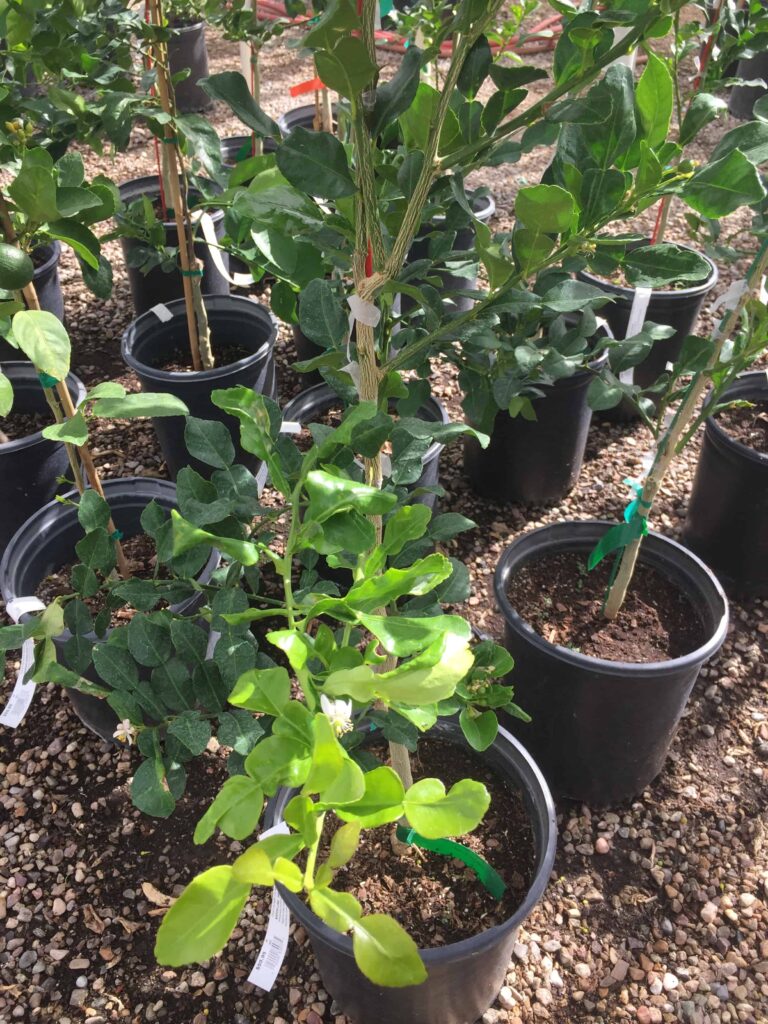
Lime Tree for Sale
If you live in growing zones 8 – 11, you will be able to find lime trees for sale in your area. My recommendation is to visit a local nursery or garden center. In zones 9 – 11, you will find them year round growing in greenhouses.
You will pay a bit more for the lime tree at a nursery but it’s typically worth it. Use them as a resource. Have them tell you what type of soil to supplement it with.
In growing zone 8, you may be able to find them year round but for sure starting in February or March. If you want to grow limes in zone 8, choose Key West Lime or Mexican Lime which are more cold hardy.
Other options for limes for sale are to choose a reputable mail order fruit tree nursery. Other options to find lime trees for sale are home improvement stores such as Ace Hardware, Home Depot, Lowe’s and Menard’s. My local Costco has them as well. Look for them starting in February through May.
Site Selection
Where you plant the lime tree is important. You don’t want it to be in an area of your property that water will drain to it. Consider the following when it comes to site selection.
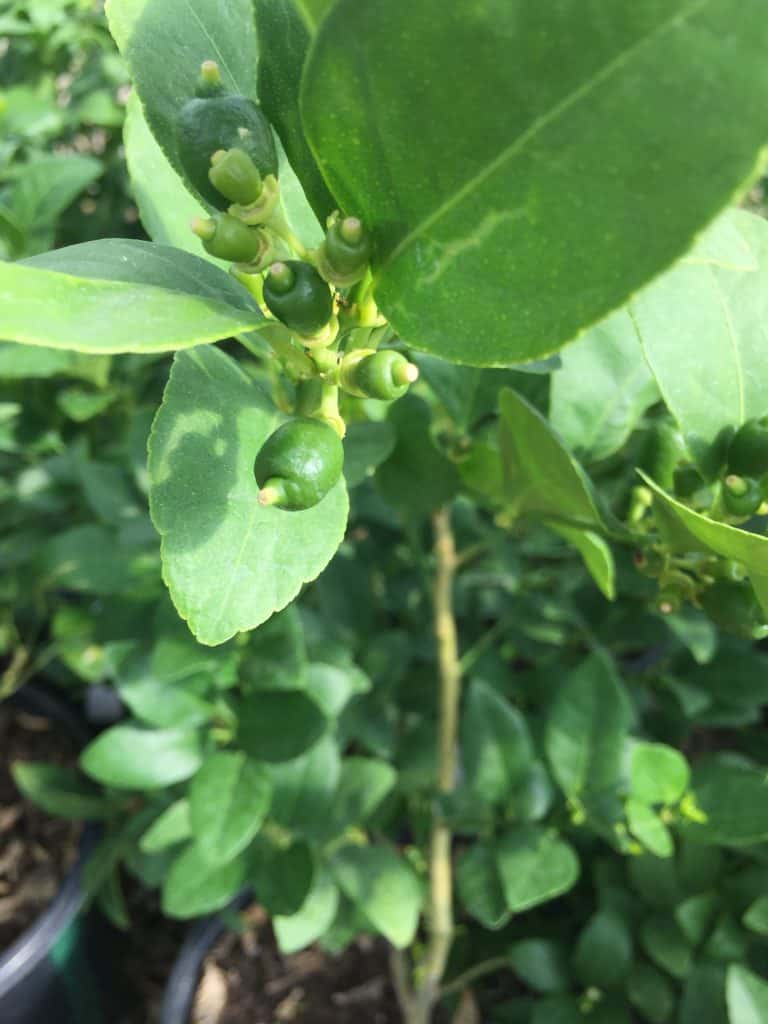
Native soil
Take time to talk to the experts at the nursery or garden center and follow their advice about planting lime trees and what soil to use so you can ensure the tree grows well. They will be able to help you decide if you should grow it in the ground or in a container. It’s important to consider your native soil.
Remember, if growing in a container, the roots will only be able to access the soil you provide them. Be sure to get the best you can.
Access to water
Another factor is if you will set up irrigation to water it or if you will water by hand. You’ll want to plant the tree or have it in a pot somewhere it will be convenient for watering. Until the lime tree is established, you’ll need to water it every day. After that, weekly. During the dry hot summers, you may need to water daily when you don’t have monsoon rains.
Sunlight, shade, frost
Fruit bearing trees need a minimum of six hours of direct sunlight per day. (More is better.) In the hot spring and summer months, it’s best if the trees can enjoy the morning and early afternoon sun and be protected from direct sun the rest of the day.
This is especially true when temperatures are well over 100 degrees F. You may need to consider shade in the afternoon sun on the hottest of days to protect the tree and leaves from sun scald. When planting a lime tree, consider the ability to protect it with a shade cloth.
Also remember the winter. You’ll need to be able to protect lime trees from frost.
Check the different types of limes at the nursery for their frost threshold. If you live in a colder area, choose one with a colder tolerance.
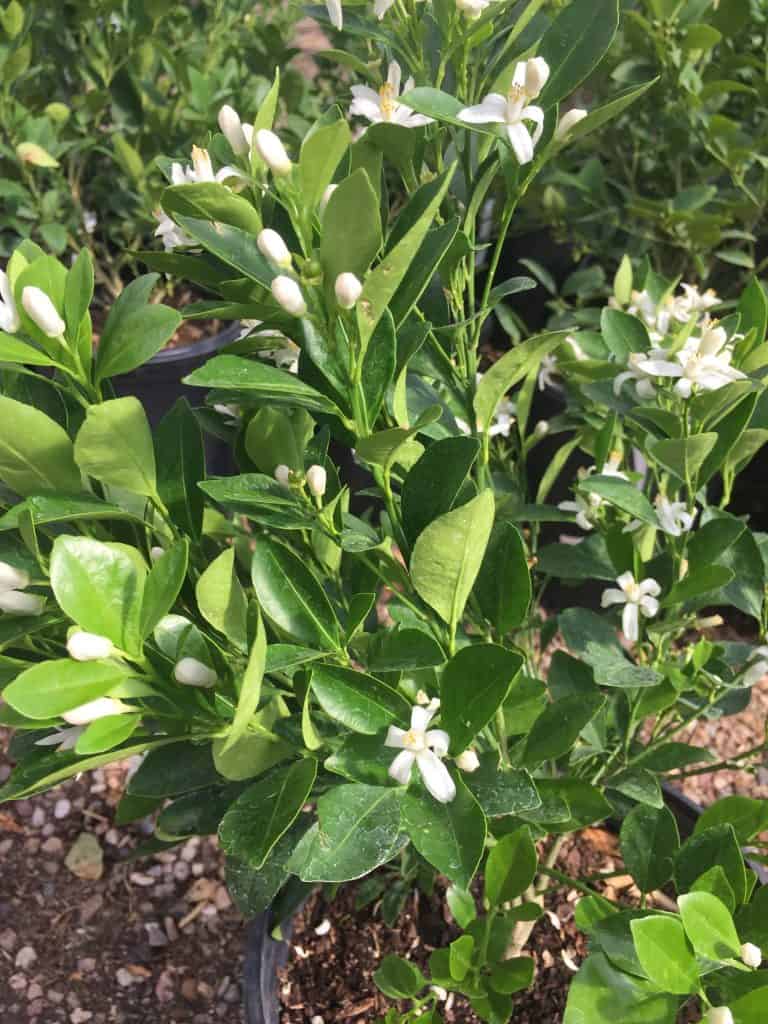
How to Grow a Lime Tree
As I said, it’s best to start with a lime tree from a garden center or nursery. If that’s out of your budget or not convenient, you can purchase from another store or online. Like all fruit trees, citrus trees are expensive. Learn what you can before buying it to ensure it lives and fruits for you.
You can buy a lime tree in a 5 gallon container. It will take up 2 – 5 five years to grow limes.
If you buy a lime tree in an 8 or 10 gallon container, it will be more expensive but it will also be larger and more established. It may bear fruit sooner.
Do not try to grow a lime tree from seed. While you may be able to grow a tree, there is a slim chance it will grow limes. You will have used several years waiting, and there won’t be fruit.
Time of Year to Plant
Planting at the right time of year is important. You’ll find the home improvement stores won’t sell lime trees in the hot summer months.
Plant after the last frost and into the spring. After that time, you won’t want to plant a lime tree because of the heat. It’s better for it to be established before the heat of the summer.
You can also plant into the fall. In hardiness zone 8 and 9a, you can plant in September. In zones 9b and above, ask at the nursery or wait until mid-September into October.
You want to factor in the heat but also get it in the ground so it can become acclimated before the cold season and frost. A lot depends on the season and how hot it is that year.
Here’s some good news if you live in a colder climate: Lime trees hold up better in cool temperatures than most other citrus plants. They are hardy.
Despite their hardiness, don’t try planting it on your farm in New England, for you need to live south of zone 9 to grow lime trees outdoors. Some varieties do well in 8a or 8b. The good news is they grow well indoors with enough light. Consider dwarf varieties if growing limes indoors.
Where to Plant
I discussed above to consider where on the property you should plant your lime tree. Consider the following if you are growing outside:
- Direct sunlight
- Access to shade in the summer
- Ability to water it conveniently by hand or irrigation
- Ability to protect it from frost
- Consider pests such as rats, raccoons, and javelina
- Quality of soil if planting in the ground
After taking into account theses factors, you have to decide if you want to grow it in the ground or in a container and where on the property you will grow.
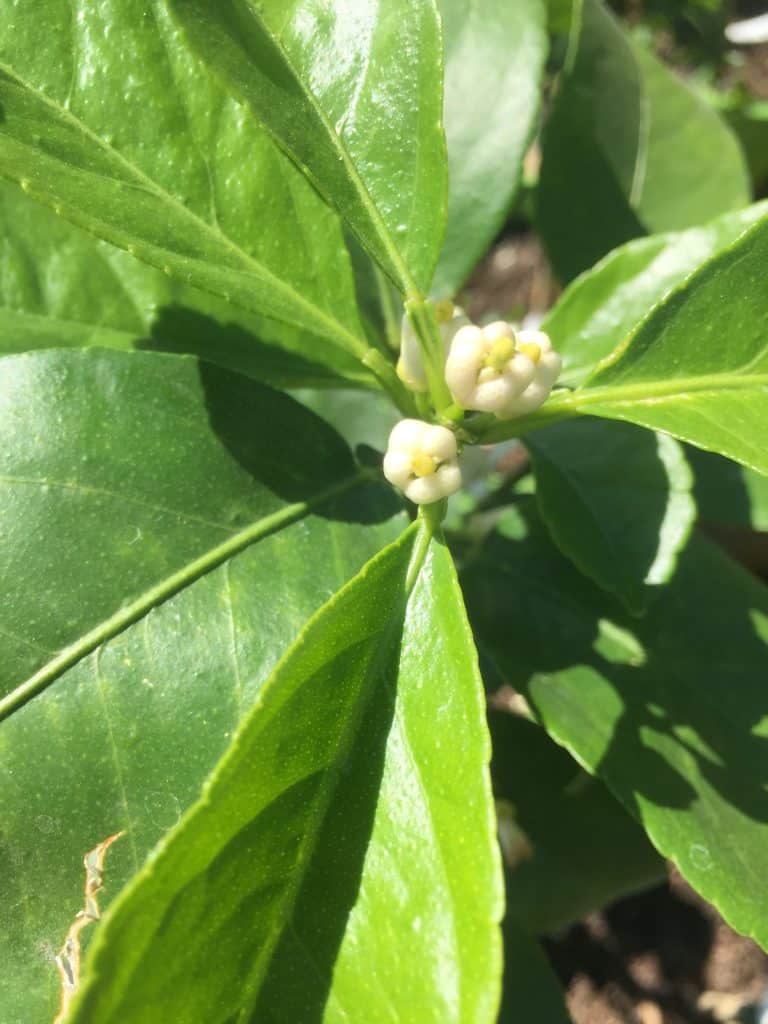
How to Plant a Lime Tree
There are some best practices for planting your lime tree outdoors and indoors. When you buy a lime tree, it will most likely come in a plastic container. You’ll need to transplant it to a larger container or plant it in the ground.
Do not do this alone. Ask for help from at least one other person. Someone will need to help support the tree as you plant it in the ground or in a larger container.
The tree is fragile. It’s important to support its weight as well as to not disturb the root ball. In most cases, you will not be able to return the lime tree to the store. For the cost, take your time planting it.
How to Plant Lime Tree in the Ground
- Dig a hole
- Gently loosen the lime tree from the container
- Do not disturb the root ball
- Plant the tree in the hole, filling in with dirt halfway
- Water to thoroughly soak the root ball
- Backfill the planting hole with more soil, making sure it’s firm
- Fill soil to ground level
- Be sure the tree is upright and as straight as possible
When watering, water deeply. However, do not get the trunk wet. A tip to ensure the lime tree trunk stays dry is to create a ring around the tree with a stick or your finger. You can do this on the outskirts of the tree, as far out as the leaves hang.
Press the soil down with your fingers to create a depression or well. When you water, fill this depressed ring with water. This will prevent runoff to the trunk.
How to Plant Lime Tree in a Container
There are four important things when planting a lime tree in a container.
- Well-draining container
- Large enough container
- Consider a dwarf variety of lime tree
- Well-draining, nutrient rich soil
If you want to grow a lime tree in a container, be sure to have ample drainage holes. You can line the bottom of the container or pot with coffee filters so the dirt doesn’t fall out. Lime trees, and citrus trees in general, like to have water but they don’t want to have soaking roots. This will cause root rot.
Buy the highest quality soil you can afford. When growing in a pot, this is where the lime plant will derive its nutrients. Ask at the garden center what soil they recommend to grow lime trees.
My nursery recommended using Fox Farm Ocean Forest Potting Soil so that’s all I buy for my lime trees, kumquat trees, and lemons.
When transplanting the lime tree from one container to another, follow the steps above. It’s imperative you do not disturb the root ball.
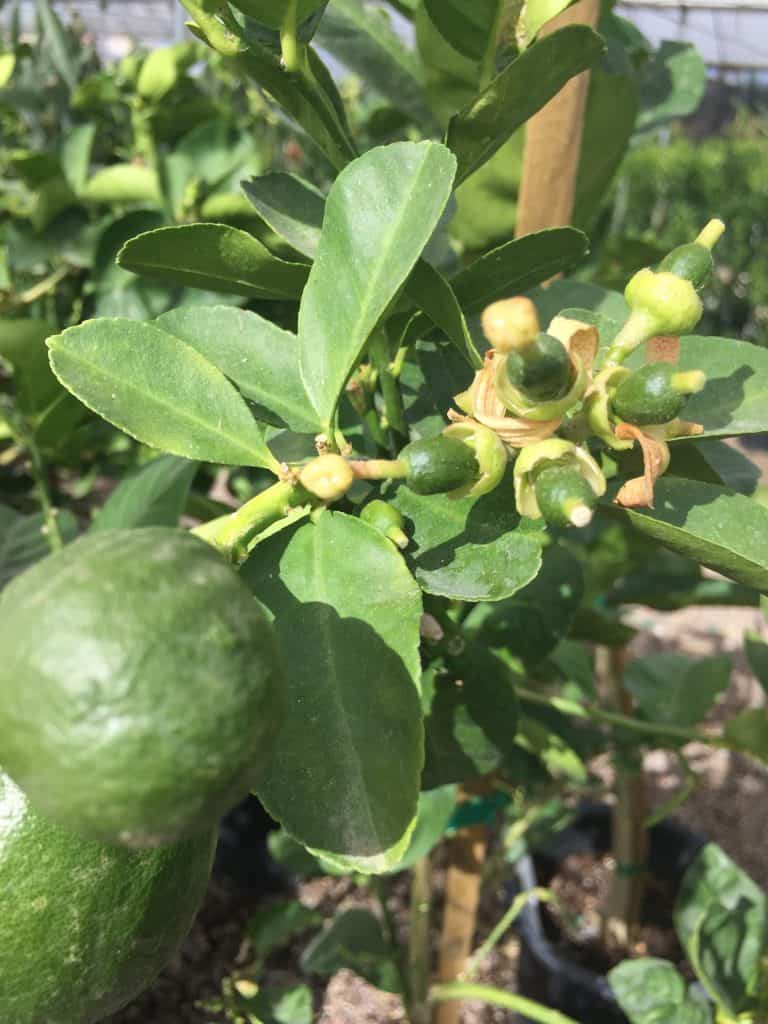
Caring for a Lime Tree
Lime tree care requires:
- Sunlight
- Water
- Fertilizer
- Frost protection
- Minimal pruning
Sunlight
Choose correctly when if planting. A minimum of 6 hours of sunlight is important for fruit-bearing trees. If you live in a region such as hardiness zone 9b with scorching summers, have a plan to shade the tree leaves in hot afternoon sun.
If growing indoors, put it in a sunny spot. When you move it outside in the warmer months, be sure it gets 6 hours.
Water
Water deeply, about 1.5 – 2 inches per week. Do not get the trunk wet. Try to water around the same time each day, either first thing in the morning or at dusk.
Pay attention to the soil. It should be moist but not drenched. If it’s overly wet, do not water. Factor in rainfall as well.
When you are watering, pay attention to the health of the leaves, stems and trunk. Note anything unusual such as yellow leaves, leaves that are missing or partially eaten, and other signs of insects, disease, and underwatering or overwatering.
Fertilizer
Fertilizer is important for a lime tree. Choose organic citrus fruit fertilizer when possible. You can fertilize mature lime trees in the fall or winter, during springtime and late in the summer. If you use slow-release fertilizer, you can fertilize less often, once every 8 – 9 months.
If your tree isn’t thriving, check nitrogen levels. You can amend with alfalfa pellets under compost that you ring around the tree.
Frost Protection
Be sure to protect your lime tree from frost in the cold months. If you are growing in containers, you may want to move them closer to your house or garage for warmth. (Remember, they still need full sun.) You can cover them with frost cloth in the evening, and remove it during the day as the temperatures permit.
If you grow them indoors in the cold months, move your tree indoors before the first frost.
How to Prune a Lime Tree
Additional lime tree care involves pruning. However, before pruning a lime tree, consider your climate. In areas that do not get freezing temperatures, you can prune in the late winter, just before spring.
In temperate areas that do have frost, wait until the spring, once the threat of frost has passed.
In general, you should prune a lime tree the first winter after planting. The important thing is to prune before the tree blossoms. However, at any time, you can gently remove broken branches or dead branches.
Prune once a year for more established trees if they need it. Otherwise, you can wait two years between prunings. They are deciduous but don’t go dormant. Occasionally, they may shed their leaves. Factors can be due to frost, water stress, or if they are over-fertilized.
Lime tree pruning entails:
- Prune dead wood and branches
- Remove diseased branches
- Prune branches that are growing off of the fruiting wood that points inwards
- Look for horizontal branches and prune those off as well
- Prune suckers
On lime trees, suckers are growths that sprout from the base of the tree. As suckers grow, they take nutrients from the plant. They will not generally grow limes. As soon as you see a sucker growing, use hand pruners to remove it from the point of origin. If you don’t get it all, the stub that remains may re-sprout multiple shoots. Keep pruning them.
As the lime trees become larger and more established and mature, you can prune more aggressively to encourage growth. The goal now is to prune branches to limit overcrowding of fruit-bearing wood. You want to thin to allow sunlight and air into the center of the tree.
Continue to remove all inward-facing branches. Remove lime tree branches that intertwine with others. You can further prune branches, leaving the healthiest ones so they are 12 – 15 inches apart.
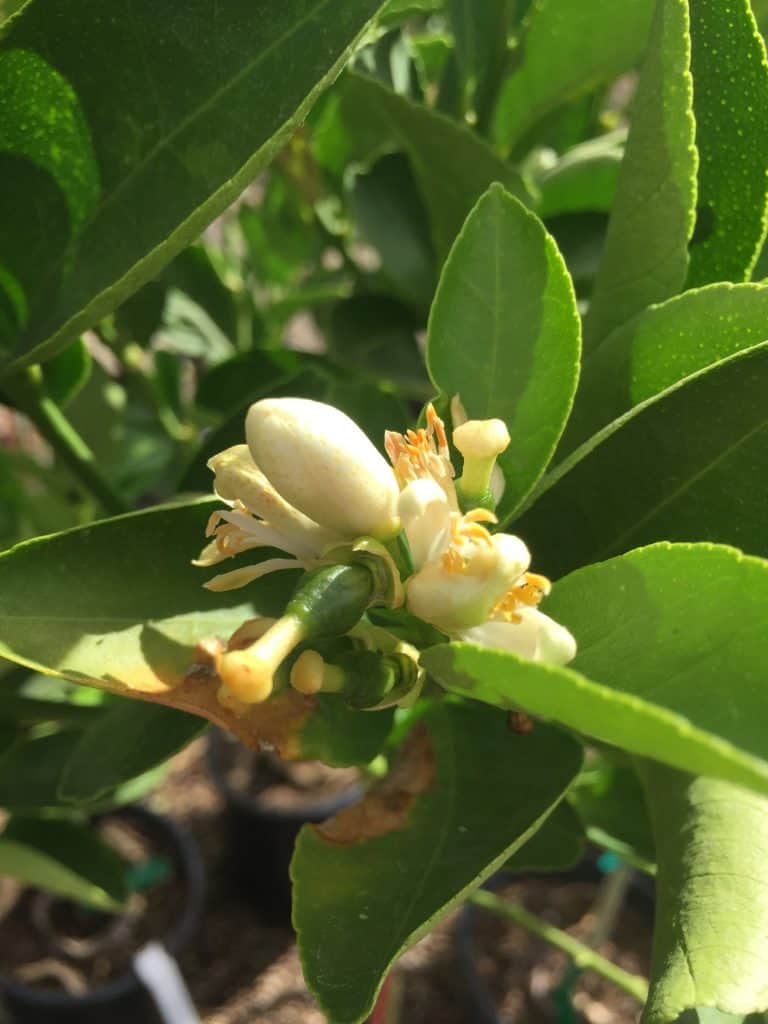
Pollination
It will take several years for a lime tree to grow limes. Much depends on the age and health of the tree when you plant it.
A lime tree, like many citrus plants, has both male and female parts. They are self-fruitful which means they provide their own pollen. Therefore, it relies on bees, other pollinating insects, and the wind to transfer the pollen between its flower buds.
While you can start by planting just one lime tree, you will increase your harvest if you have two or more trees and/or if you pollinate by hand.
You can grow lime trees with lemon trees and other citrus trees such as grapefruit and kumquat. Cross-pollination can occur between citrus fruit trees. It won’t affect the citrus fruit — the lime will still be a lime even if it’s cross-pollinated with a lemon — but the seeds will be affected.
If you are growing a lime tree indoors, you’re likely not keen on inviting insects into your home. The great news is you can pollinate by hand. Using a small paintbrush or cotton swab, gently rub the pollen. Repeat this process with all the flowers. Before long, you’ll start growing small limes.
Soil
Good quality soil is vital to maximize the longevity of your lime tree. If planting your tree outside, choose a partially sandy area that offers good drainage, although whether you grow indoors or outdoors, it’s a good idea to purchase potting soil made for citrus trees. Fast-draining soil is important.
You can plant lime trees in the ground in native soil and add in some nutritious amended soil as well. Keep the soil from the root ball and whatever soil was in the container as you transplant the tree into the ground.
Don’t worry too much about the temperature of the soil when you plant a lime tree. Root temperature isn’t typically an issue with temperate-grown tree crops.
What Type of Soil Do Lime Trees Need
Lime trees thrive in soil with a pH from 6.0 – 6.5. It needs to be well draining and able to hold moisture. Citrus trees in general tend to do well with nitrogen. You can add a cup of alfalfa pellets under compost for trees in the ground. In containers, add 1/4 cup under compost on top of the soil.
Growing Limes Indoors
Lime trees are easy to grow outdoors if you live in the right climate. If you don’t, you may want to consider buying containerized dwarf cultivars. You can keep it outdoors in the summer and move it inside before the first frost.
You’ll want to ensure you choose a dwarf variety of lime trees for your indoor space. Most dwarf trees remain under ten feet tall, with some averaging heights well under that.
Planting your lime tree in a large pot with good drainage is critical. You can use any container, but keep in mind that you may need to replant as your lime tree grows.
As a general rule, you should pot your lime tree in a container that’s a bit larger than the tree’s root ball. Once your tree gets too heavy to carry around, consider purchasing a wheeler for it. That way, you can move it outside in the summer.
If you live in a cloudy environment and notice the leaves turning pale or dropping, you may need to use artificial lighting to prevent the tree from dying.
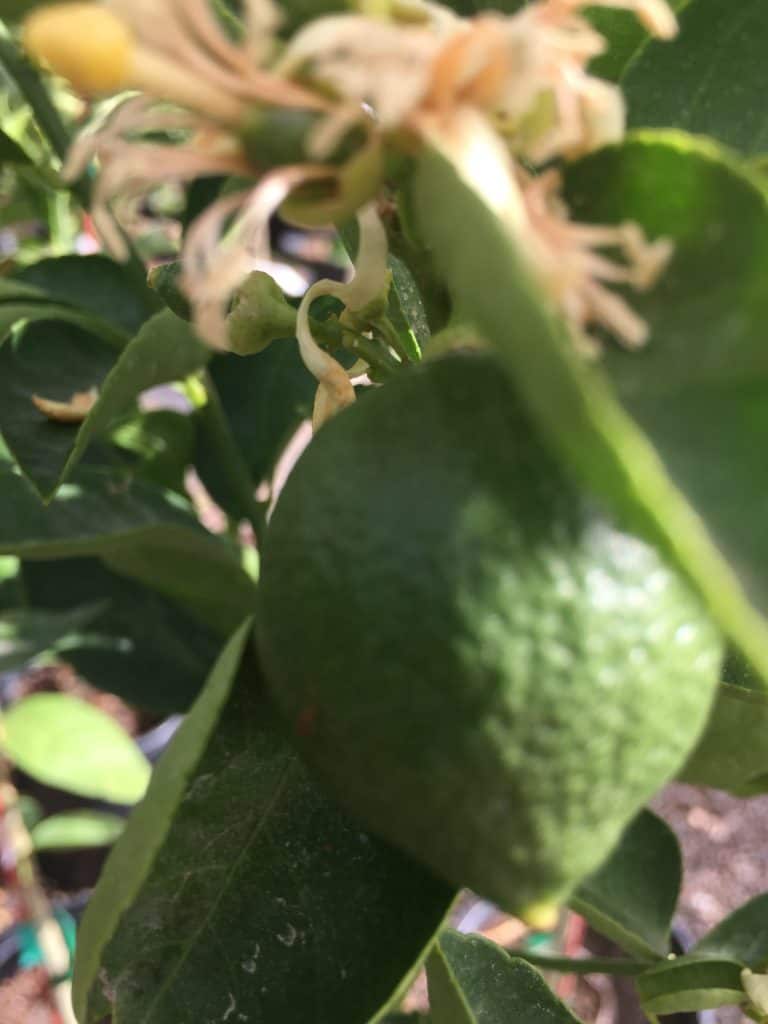
Lime Tree Fruits
You already know that a lime tree can take up to 2 – 5 years to begin producing fruit, so you might be disappointed when the 5th year rolls around and your tree isn’t growing limes. Non-existent lime production can result from insufficient nutrients in the soil, over-pruning, and a lack of sunlight or drainage.
Once your tree begins producing limes, you might wonder when you should harvest them. It’s best to pick limes when they’re still green. Although yellow limes are fully mature, they have a more bitter taste. Limes ready for picking have a light green color and feel soft when you squeeze them.
Tips for Growing
If you have an indoor lime plant, there’s a higher chance that it’ll develop fruit if you put it outside in the sun during the summer. Although it’s exciting to see lime fruits, avoid the urge to pick them too soon; they don’t ripen well off the tree.
Quick temperature changes can harm lime trees. Therefore, you should avoid placing your lime tree near a heater or air conditioner. Also, when moving your potted lime tree plant between inside and outside, you should do the transition gradually, so it can acclimate to any temperature changes. Plant leaves, like human skin, can be delicate and burn in the sun without time to adjust!
Planting Lime Tree from Seed
Above, I discouraged you from planting lime seeds and trying to grow them. If you look on seed company websites, you won’t typically find lime seeds for sale. This is because while you may have some success growing a lime tree from seed, you are unlikely to grow actual limes.
If you plan on planting a lime seed directly from the fruit, wash the seed well and set it out to dry for 2 – 3 days. Meanwhile, identify a sunny area that has slightly sandy soil and doesn’t pool with rainwater.
Once your seeds are dry, dig a small hole and plant the seeds ¼ to ½ inches deep. Make sure to plant them in the spring so that they can take advantage of the warm summer weather. You can expect to see the seeds germinate after a couple of weeks.
You will need to water regularly. You will need to wait 5 – 10+ years to see if it will grow limes.
Get Planting
Lime trees need regular watering until they are established. The soil should become slightly moist when you water it, but avoid overwatering, as soggy soil can lead to fungus and rot. It’s also best to let the soil dry out a bit between watering and use a spray bottle to mist the tree’s leaves.
That said, don’t panic when your lime tree doesn’t produce limes at first. They often take up to 4 years to start bearing fruit. The size of tree you start with plus the growing conditions will all impact when it fruits. Start with a larger sapling if you want to grow limes sooner.
Here’s some good news — after all your hard work keeping your lime tree alive, you can expect it to live anywhere from 50 to over 100 years! So, go ahead and get planting to start enjoying years of homegrown limes.
There are many varieties to choose from. Plant a dwarf Mexican lime tree alongside a Key lime tree for different flavors.
Although some people have trouble telling the difference in taste between limes and lemons, limes taste more bitter, and lemons have a more sour flavor.
They do well in the ground and in pots and containers. Once you plant lime trees, add to your orchard with lemon trees, kumquats and oranges. You’ll enjoy several months of fresh citrus each year.
Learn which types of oranges are best for homesteading.

